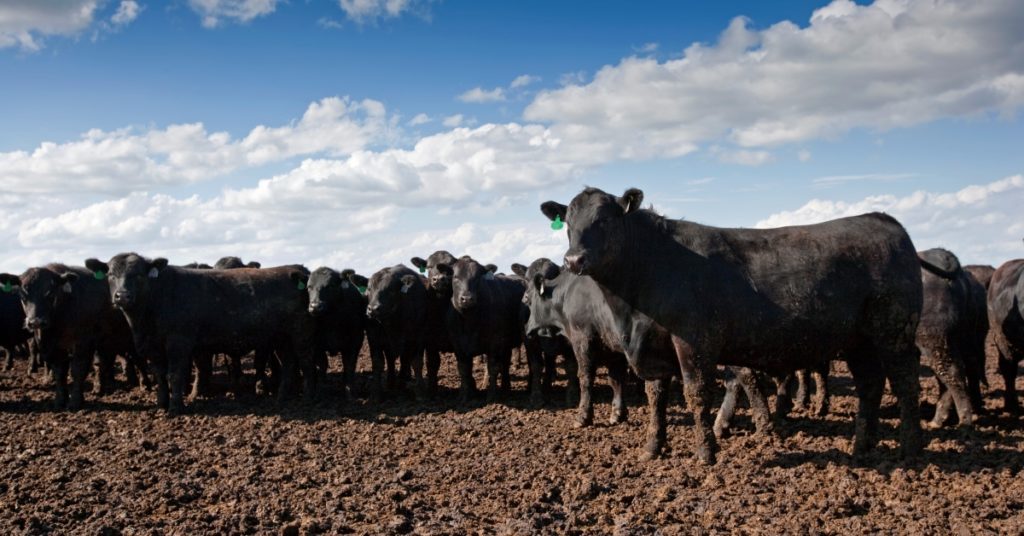Nothing influences an outcome more than getting off to a good start — or a bad one. Second only to calving and the days that follow, the process of weaning and adapting to the feedlot is the next most impactful event for calf health and performance. Before calves are loaded onto the truck, a plan for how to manage them upon arrival should be in place. Knowing if calves are at a high risk for health issues will allow for adequate time to implement countermeasures in advance of delivery. The best tactic for avoiding surprises is to stay one step ahead of trouble.
No two cow-calf operations are exactly alike. Different management programs, nutrition, genetics, and environments lead to different risk levels for calves. Bovine respiratory disease complex (BRD), or “shipping fever,” remains the single-most costly disease associated with beef production in North America. Morbidity and mortality, along with decreased performance and carcass quality, add to the economic losses associated with BRD.
Determining risk
There are graded levels of risk associated with BRD. Low-risk cattle include yearlings under minimum stress, or calves that have been weaned and backgrounded for more than 45 days. Medium-risk cattle include yearlings stressed by shipping and/or previous management or preconditioned, home-raised calves that have not been exposed to transportation or a sale barn. Calves at high risk are those freshly weaned, purchased directly from the cow-calf operation, commingled, and/or run through a sale barn. As more stressors stack up, risk of health challenges increases. The higher the risk, the more management and treatment calves will require.
Facilities
Before receiving calves, the suitability and condition of pens should be assessed. Pen capacities typically range from 50 to 200 head. Smaller pens are recommended if low numbers of cattle are purchased to be combined later. Continuously moving small groups to larger pens will compound stress and should be avoided. Mixing new calves with those that have already acclimated will extend the stress of commingling, resulting in an increased number of pulls and treatments over an extended time. Ideally, starting pen capacities should provide ample room for a given weight of calves. For example, a pot-load of calves weighing 500 to 600 pounds should be received into a pen with a minimum 100-head capacity.
Pen size and condition, along with bunk space and dimensions, need to match cattle size and number. A linear bunk space of 18 inches per calf is an important to promote eating together and further reduce stress. More experienced yearlings can get by with less and require 12 inches of bunk space while eating throughout the day. Another important bunk measurement for calves is the bunk throat height, which is measured from the ground to the top of the bunk wall facing the cattle. The throat height should be 18 to 22 inches. Give special attention to the youngest calves in the pen. Small calves that stretch to reach the feed will be impeded by bunk pressure on their throats, resulting in reduced intake.
Other pen considerations include facilitating proper drainage to reduce the amount of mud by maintaining a slope of 2–4% facing away from the bunk. Mounds will help keep cattle dry and comfortable in wet/cold weather and should provide 20 to 40 ft2 of space per head.
Vaccination and health protocols
Receiving protocols should include vaccinations against BRD, as well as clostridial diseases. Commercially available vaccines for BRD are either modified-live viral vaccines (MLV) or killed viral vaccines, which are administered intranasally, subcutaneously, or intramuscularly. Typically, MLV will elicit an immune response similar to that achieved by exposure to a naturally occurring virus. A MLV will prime the calf’s immune system to respond more effectively should it encounter wild-type viruses. Intranasal vaccines offer site-specific immunity, supporting a short-term response. Pairing an intranasal vaccine with a MLV injection will elicit a stronger immune response. The localized immunity that intranasal vaccines produce provide early intervention at the initial point of contact of BRD pathogens. Follow veterinary guidelines when choosing a vaccine, as well as the label directions regarding the timing of any boosters.
Traditionally, cattle processing occurs upon feedlot arrival. If accomplishing this is not feasible due to time or labor constraints, it has been established that delaying processing for up to 14 days can improve the immune response and enhance average daily gain. Stress has immunosuppressive consequences, inhibiting the animals’ response to vaccines. Providing calves access to feed and water while they acclimate to their new environment will support their immune response.
Nutrition
Cattle often become severely shrunk following longer transport times, so it is vital to get them unloaded quickly and provide them with access to fresh water and feed. Often, newly weaned calves have never been exposed to feedlot waterers or bunks. Allowing waterers to overflow for the first couple of days will attract calves to the source, and they can be similarly enticed to the bunk with good-quality grass hay. Additionally, offering low-moisture block supplements and including pelleted supplements in the ration can help replenish nutrients, restart the rumen and stimulate consumption.
A palatable starter ration is required to facilitate intake. Most freshly weaned calves are naive to silage and other fermented feeds, which should be included at low levels in receiving diets. Calves do not like fines and have an impressive ability to sort through coarse ingredients. Starter rations must be balanced with the proper minerals, vitamins and feed additives. Additionally, lightweight calves (<500 lbs.) have increased protein and energy requirements relative to their older counterparts.
Starting high-risk cattle requires attention to many details, including nutrition and facilities, along with establishing immunity. Advanced preparation means knowing what to expect, and having facilities and a receiving protocol ready before the trucks arrive. Transitioning calves successfully through the starting phase will yield health and performance benefits for the entire feeding period.
-
- Source: JAMES GASPERS, PH.D. – HUBBARD FEEDS








